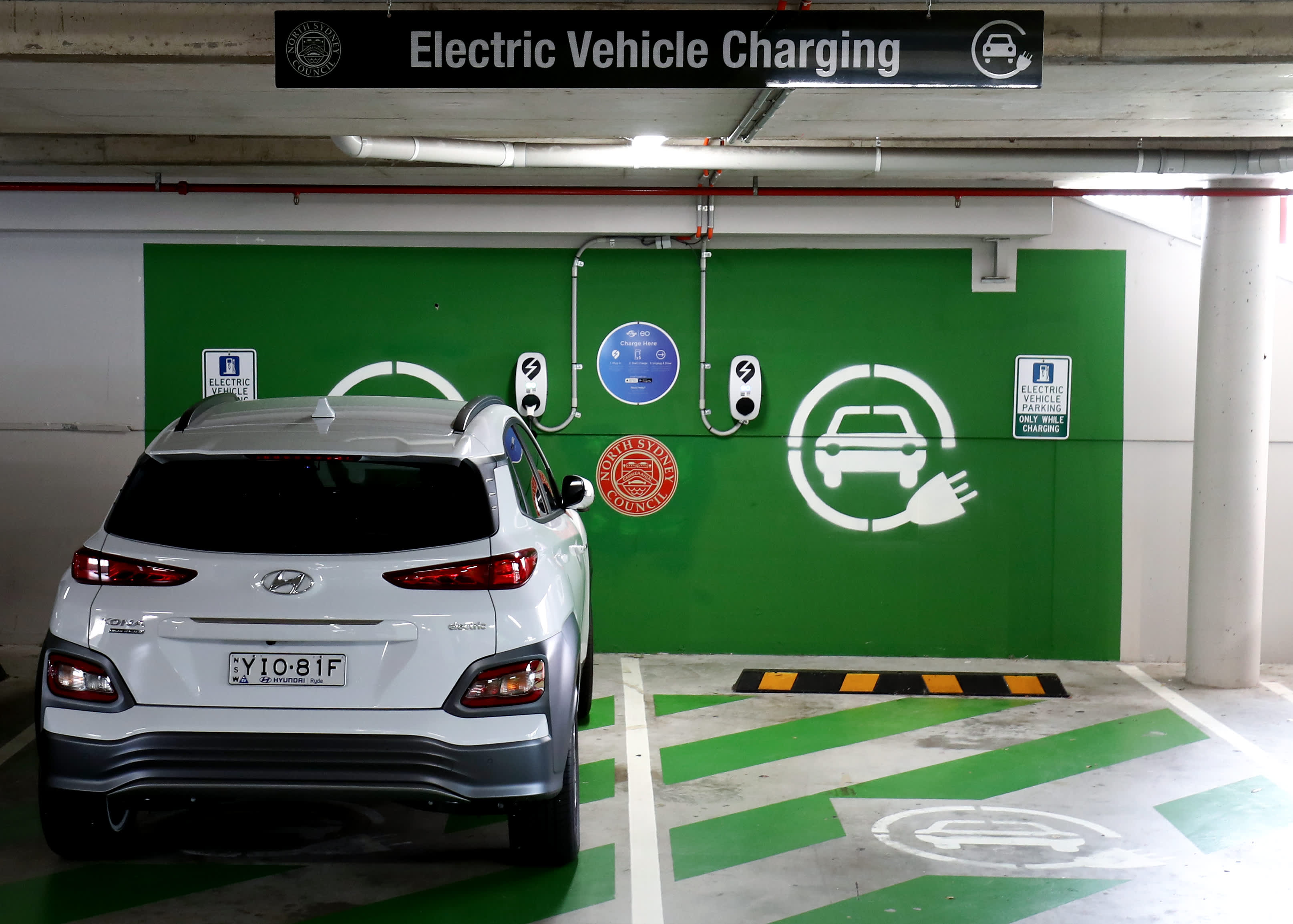General Motors is losing ground in China, its top sales market for more than a decade and one of two main profit engines for the Detroit automaker.
The company’s market share in the country, including its joint ventures, has plummeted from roughly 15% in 2015 to 9.8% last year — the first time it has dropped below 10% since 2004. Its earnings from the operations also have fallen by nearly 70% since peaking in 2014.
related investing news
The coronavirus pandemic, which originated in China, is partially to blame. However, the declines started years before the global health crisis and are growing increasingly more complex amid rising economic and political tensions between the U.S. and China.
There’s also growing competition from government-backed domestic automakers fueled by nationalism and a generational shift in consumer perceptions regarding the automotive industry and electric vehicles.
Take, for example, Will Sundin, a 34-year-old science teacher who told CNBC he never envisioned buying a Chinese-branded vehicle when he moved to the country in 2011. More recently Sundin purchased a Nio ET7 electric vehicle as his daily driver in Changsha, the capital city of China’s Hunan Province.
“I wanted something big and comfortable, but I also wanted something that was a bit quick,” he said. “I like the look of it.”
Sundin, who moonlights as a YouTube car reviewer, knows the Chinese vehicle industry well. He purchased his Nio over models from rival Chinese automakers Xpeng, Li Auto and IM Motors. He said the vehicle’s ability to swap out the battery for a fresh one, rather than recharging, “put it ahead pretty quickly.”
Not on his consideration list? American brands such as GM’s Cadillac and Buick, which initially led the automaker’s growth in China.
“Cadillac has a good image in China, but it’s expensive,” said Sundin, who previously owned a 2012 Ford Focus. “I think the problem they face is that they have competition, new competition, a lot of new competition, from different directions that they weren’t expecting.”
That competition is increasingly becoming a problem for GM, which has acknowledged such issues with its Chinese business. However, the company has not offered much assurance on how to reverse the trend other than the promise of new EVs and a new business unit called The Durant Guild that will import pricy vehicles with high margins from the U.S. to China.
While many U.S. brands aren’t performing well in China, GM’s decline is especially notable. GM’s operations in the country are much larger than those of its crosstown rival Ford Motor, for example. It also has a much smaller footprint globally after shedding its European operations and shuttering operations elsewhere to largely focus on North America, China and, to a lesser extent, South America.
Being overly reliant on only a few markets can be risky. But it has led to record earnings for GM, as the company under CEO Mary Barra has done away with underperforming operations. Electric vehicles could be a new opportunity for GM to grow globally, but experts say it would be an uphill battle compared with recovering in China in the years to come.
“With the changes that they put in place, with a refocus on North America and China, the pull out of Europe, essentially, that does create a risky scenario now that you have some issues, multiple issues, going on in the Chinese market,” said Jeff Schuster, executive vice president of LMC Automotive, a GlobalData company.
Downplaying results
GM has been downplaying the role of its operations in China in recent quarters, including CFO Paul Jacobson saying China is “not decisive” to GM’s financial performance when he discussed earnings in October.
Barra said in December that China is an important part of GM’s business but that the company also is paying attention to other issues, which then included the government’s now-defunct “zero Covid” policy and recent protests.
“We still see opportunity there … obviously, we also watch the geopolitical situation. We can’t operate in a vacuum,” she said during an Automotive Press Association meeting. “But we continue to see opportunity there and we’ll continue to evaluate the situation, but our plans are to be in a leadership position in EVs.”
A bright spot for GM in China has been its Wuling Hongguang Mini, made by a joint venture, which is the bestselling EV in the market. Since going on sale in mid-2020, the economy car has sold more than 1 million units.
Still, Jacobson earlier this year said China’s handling of the coronavirus pandemic and surging Covid cases accounted for the nearly 40% drop in equity income for the operations in 2022.
GM reports its earnings from China as equity income because the country mandates joint ventures for non-Chinese automakers — other than Tesla, which was granted an exemption. GM has 10 joint ventures, two wholly owned foreign enterprises and more than 58,000 employees in China. Its brands include Cadillac, Buick, Chevrolet, Wuling and Baojun.
“We see a lot of Covid cases in China right now that slowed down the consumer. So we expect it’ll be a little bit of a slow buildup but hopefully, working its way back up to levels that we’re used to over time,” he told reporters on Jan. 31 during an earnings call.
Not just Covid
But it’s not just related to the pandemic. Equity income from GM’s Chinese operations and joint ventures has fallen 67% since its peak of more than $2 billion in 2014 and 2015. That includes a decline of about 45% from then to 2019 — prior to the coronavirus crippling China’s economy and vehicle production. In 2022, GM’s Chinese operations garnered equity income of $677 million for GM.
“This is not Covid. This started well before Covid,” Michael Dunne, CEO of ZoZo Go, a consulting firm focused on China, electrification and autonomous vehicles. “It also coincides with escalating tensions between the United States and China. There’s no question, and it’s impossible to measure, but it’s definitely a factor.”
Dunne, president of GM’s Indonesia operations from 2013-15, said the decline of GM and other nondomestic automakers comes alongside China’s market growth slowing, Chinese automakers becoming increasingly more competitive and the shift to all-electric vehicles — which has been massively subsidized by government agencies.
“They’ve all really taken it on the chin in the last five years as middle market brands. The Chinese consumers are increasingly buying Chinese brands,” he said. “That’s a seismic shift … the mindset has changed.”
Domestic startups and automakers have helped Beijing realize its goal of boosting penetration of new energy vehicles — a category that includes electric cars. More than one-fourth of passenger cars sold in China last year were new energy vehicles, according to the China Passenger Car Association, which predicts penetration will reach 36% this year.
Local companies rushed to grab a slice of that growth in an auto market that was slumping overall. Startups such as Nio helped promote the idea of electric vehicles as part of an aspirational lifestyle and status symbol in China. And the rising quality of domestic-made electric vehicles helped support — and tap — growing nationalistic pride among China’s consumers.
Chinese brands have grown market share by 21% since 2015 to roughly half of all passenger vehicles sold in China last year, according to the China Association of Automobile Manufacturers. For comparison, sales of American brands in the U.S. during that time have been level at about 45%.
“Obviously the market has just been in a different place; a lot of it is policy-driven,” Schuster said.
The impact of Chinese nationalism
LMC Automotive reports Chinese companies accounted for half of the top 10 automakers in sales in the country last year, up from only three in 2015. The most notable is BYD Auto, an electric automaker that has skyrocketed from sales of roughly 445,000 units since then to nearly 2 million last year, making it one of the top five automakers by sales in China.
“I think the No. 1 reason for GM’s decline is this tilt toward Chinese nationalism,” Dunne said. “That takes the form of China has declared that it wants to be the global dominator in electric vehicles and it’s doing everything in his power to cultivate national champions like BYD.”
Aside from GM, America’s other legacy automakers — Ford and Chrysler-descendent Stellantis — have not fared much better. Both have experienced significant downturns in sales; however, neither has communicated any plans on giving up on the market.
In February, Ford named Sam Wu, a former Whirlpool executive who joined the automaker in October, as president and chief executive of its China operations, starting March 1.
Ford’s market share in China has been about 2% since 2019, down from 4.8% in 2015 and 2016, according to the company’s annual filings.
Ford’s problems in China aren’t just overseas. The company said in February it will collaborate with Chinese supplier CATL on a new $3.5 billion battery plant for electric vehicles in Michigan. The deal has been criticized by some Republicans, including Sen. Marco Rubio of Florida, who requested the Biden administration review Ford’s deal to license technology from CATL.
The joint venture between Stellantis and Guangzhou Automobile Group producing Jeep vehicles in China filed for bankruptcy in late 2022 following a decision to dissolve the partnership and import its SUVs into the country.
Stellantis CEO Carlos Tavares has said the company is pursuing an “asset-light” approach in the country, focused on boosting profits and not necessarily sales, which declined 7% in 2022.
“It’s also important that you realize that our financials in China have been improving significantly,” he told reporters during a call last month, saying the company is “cleaning up the place.”
While the American-focused automakers regroup, China’s local automakers continue to gain ground in their home market.
“People in China are proud,” said Nio owner Sundin.
“The same way as ‘American Made’ is in the USA and all the patriotism behind that, in China, [it’s] the same thing: ‘Finally, we can make a phone or we can make a car that’s as good or better than foreign automakers.'”
— CNBC’s Evelyn Cheng contributed to this report.








